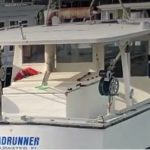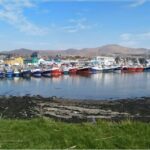FISH-NL calls for elimination of cod quality program; five years later and price per pound has declined

“The cod quality project serves no other purpose than to extract fish from fishermen, and into the FFAW.”
— Jason Sullivan, FISH-NL’s secretary-treasurer
FOR IMMEDIATE RELEASE Wednesday, June 26th, 2019
The Federation of Independent Sea Harvesters of Newfoundland and Labrador (FISH-NL) is calling for the elimination of the so-called cod quality program that directs hundreds of tonnes to the FFAW-Unifor — with the fish once again set aside for all harvesters to catch.
Further, FISH-NL says the No. 1 action that can be taken to increase the price of cod is to grade fish when it lands at the wharf — not the plant.
“The FFAW’s cod quality program is a joke — the quality is there but the price is not,” says Ryan Cleary, President of FISH-NL.“The program has been around for five years and the average price of cod has actually declined.”
Fisheries and Oceans has set the 2019 quota for the small-scale northern cod stewardship fishery at 12,450 tonnes — a 30 per cent increase over last year’s 9,500 tonnes. Details of the management plan — including opening/closing dates, weekly limits, etc. — have yet to be announced.
DFO confirms the cod-quality project — which began in 2014, and is meant to improve the quality/price of cod landed — will go ahead again this year, although the amount of fish isn’t yet known. Roughly 300 tonnes were set aside in 2018, and more than 400 tonnes the year before. The fish comes off the top of the overall quota.
Last year’s program involved 55 FFAW-selected harvesters fishing up to 6,000 pounds a month on top of their weekly limit. The program was allowed to continue even when the commercial fishery closed.
The FFAW has said the cod-qualify program will “return premium prices to harvesters,” but the average landed price of cod last year was 63 cents a pound — one cent lower than 2017.
“The cod quality project serves no other purpose than to extract fish from fishermen, and into the FFAW,” says Jason Sullivan, FISH-NL’s secretary-treasurer.
Inshore harvesters have changed how they fish to dramatically increase the quality of product, but a poor grading system ends up stealing money from their pockets. Fish isn’t graded when it’s landed at the wharf, but sometime later when it arrives at the processing plant. Harvesters say if crab and shrimp can be graded at the wharf, so can codfish.
The FFAW’s cod quality project is run by the union’s Fisheries Science Stewardship and Sustainability Board (FSSSB), the same outfit that charges west coast harvesters $200 for halibut tags. Such fees aren’t charged to harvesters from Quebec and the Maritimes who fish halibut in the same waters.
The FFAW-Unifor charges inshore harvesters one cent for every pound of cod purchased by the processors — money for union graders to “independently” check the sampling/grading process. In 2017, an estimated 30,000 tonnes of cod were taken, which worked out to about $660,000 for the union.
Contact: Ryan Cleary 682 4862










































